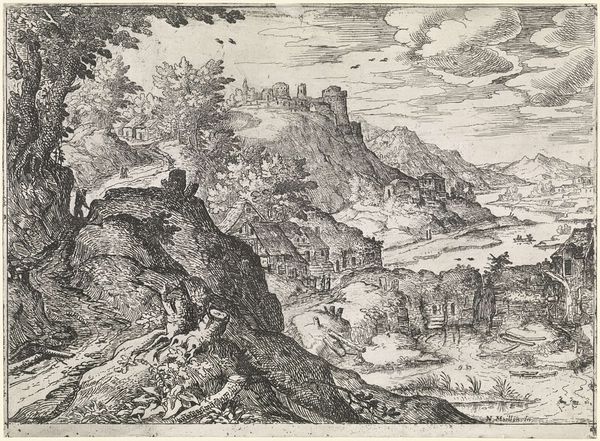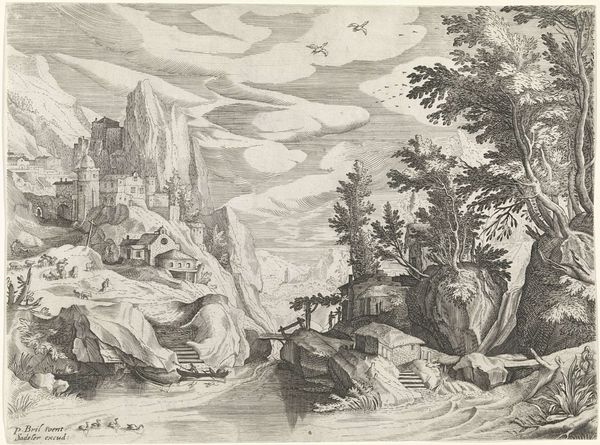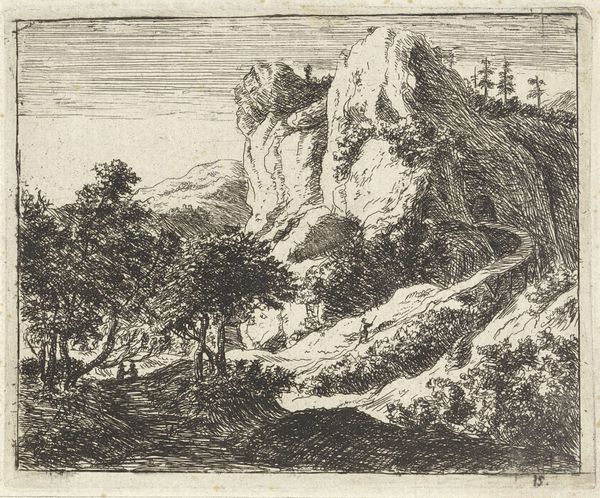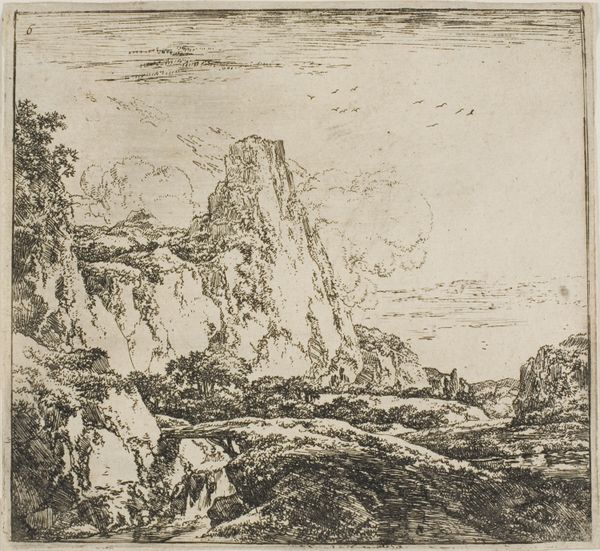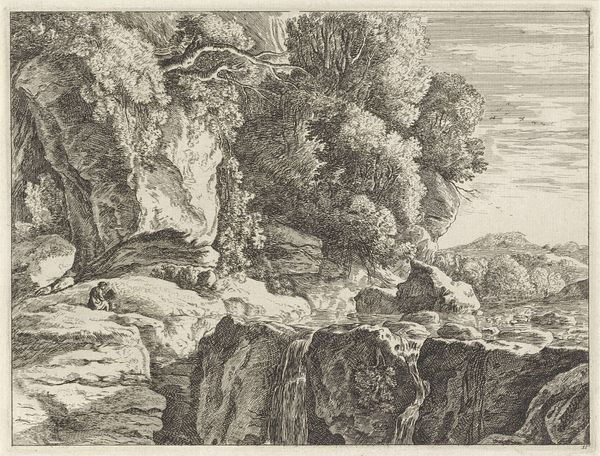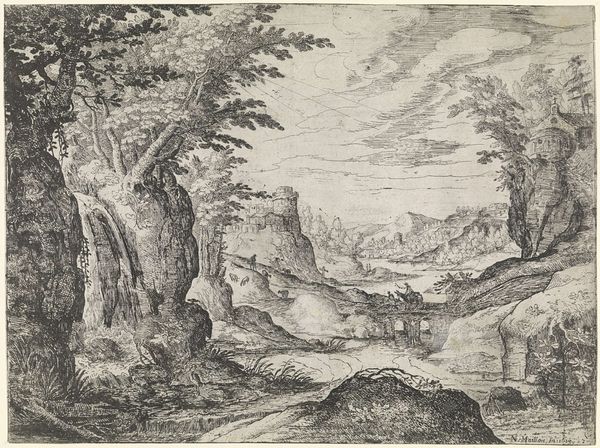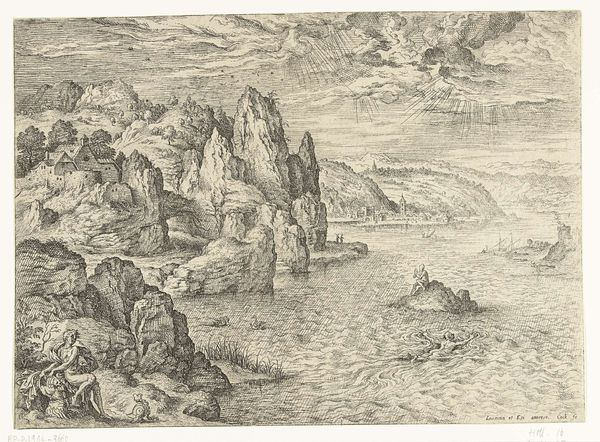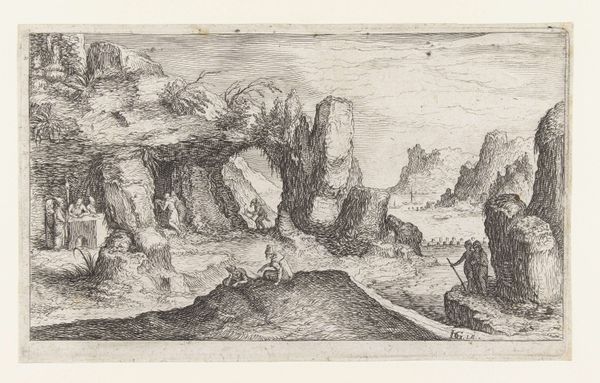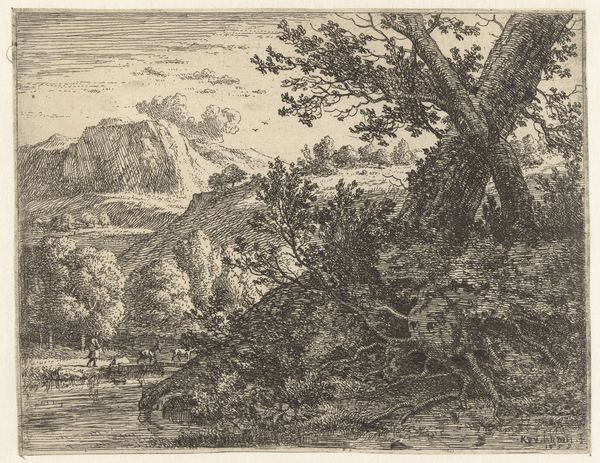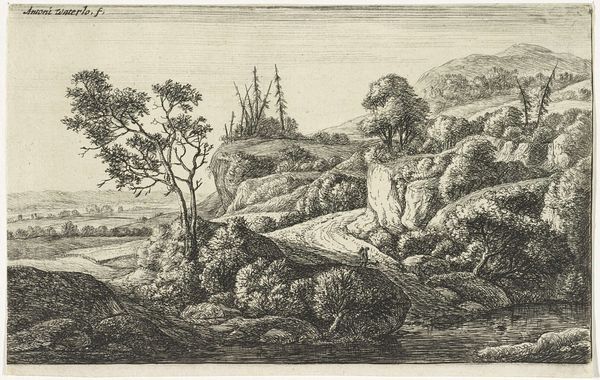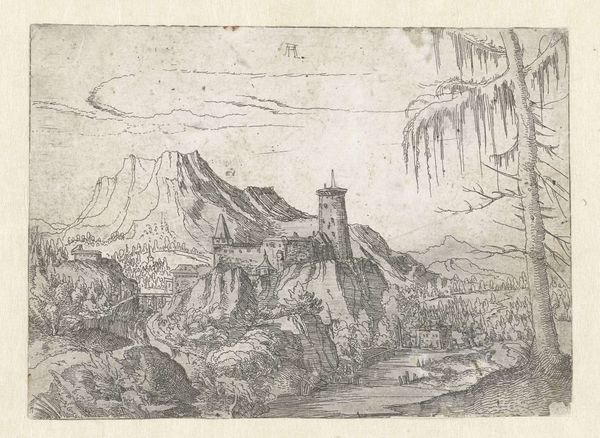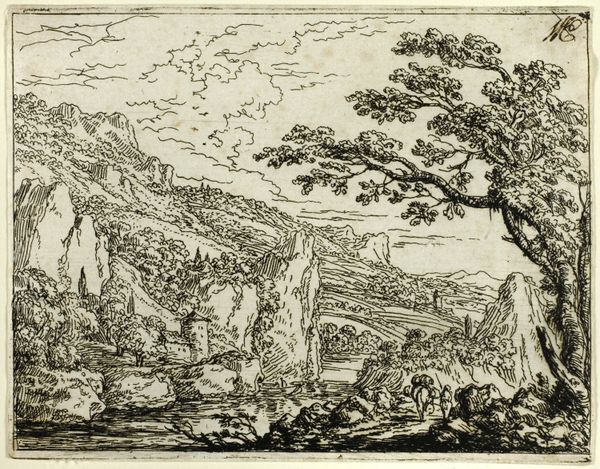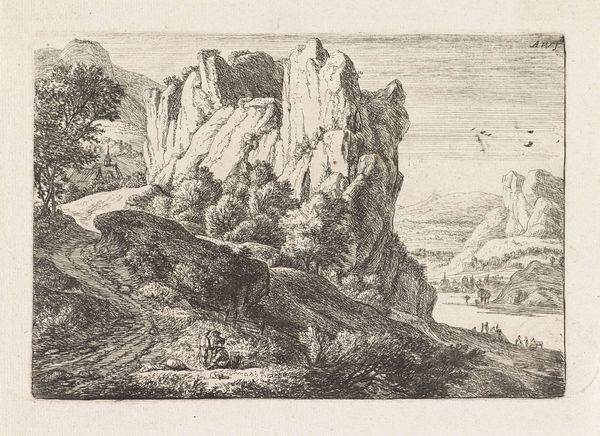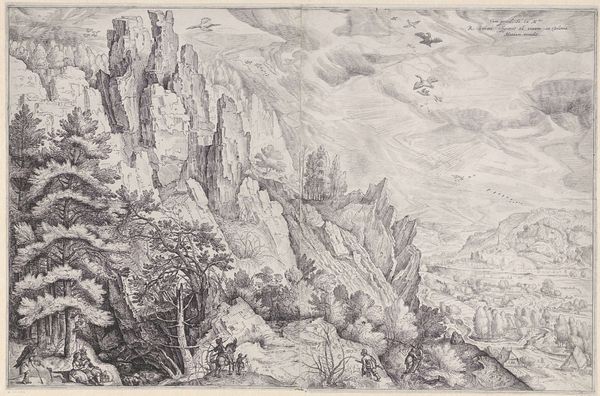
print, etching
#
baroque
# print
#
etching
#
landscape
#
history-painting
Dimensions: height 235 mm, width 315 mm
Copyright: Rijks Museum: Open Domain
Editor: Here we have Nicolas Moillon's "Mountain Landscape with Stone Bridge," an etching from 1613. I'm struck by how this landscape feels both epic and intimate at the same time. All those carefully rendered details... what do you see in this piece? Curator: The bridge itself is incredibly symbolic. Bridges represent connection, transition. Note how it joins the known – the road travelled by the cart – with a more precipitous path forward. It speaks of aspiration and potential risk, doesn't it? Consider the positioning of that distant city; a promised land or simply the unknown future? Editor: So, you're suggesting the landscape isn’t just a place but also a…journey, a sort of visual metaphor? Curator: Exactly! Look at the mountain on the left. Mountains, symbolically, represent obstacles, the trials we must overcome. The settlement built right on the side signals a community forged in the face of difficulty, doesn't it? Almost clinging to existence. Does that resonance with anxieties of the time, perhaps relating to political upheaval? Editor: That makes sense. The way those figures are making their way up the rocks gives a sense of determination. Curator: What about the birds overhead? Free spirits or harbingers of change? Remember, the symbolic weight of images shifts over time, shaped by prevailing beliefs and historical context. This piece speaks to both permanence and transience, security and insecurity – a constant negotiation within the human experience, wouldn't you say? Editor: That's a really interesting way to consider it. Thanks; it's made me think about landscapes quite differently. Curator: It’s all about looking beyond the surface, seeing the echoes of history and psychology reflected in the visual world!
Comments
No comments
Be the first to comment and join the conversation on the ultimate creative platform.
